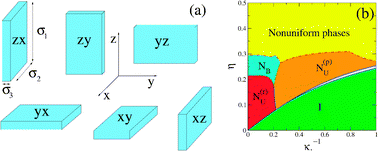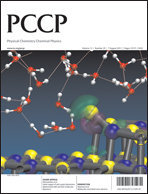Biaxial nematic phases in fluids of hard board-like particles
Abstract
We use density-functional theory, of the fundamental-measure type, to study the relative stability of the biaxial nematic phase, with respect to non-uniform phases such as smectic and columnar, in fluids made of hard board-like particles with sizes σ1 > σ2 > σ3. A restricted-orientation (Zwanzig) approximation is adopted. Varying the ratio κ1 = σ1/σ2 while keeping κ2 = σ2/σ3, we predict phase diagrams for various values of κ2 which include all the uniform phases: isotropic, uniaxial rod- and plate-like nematics, and biaxial nematic. In addition, spinodal instabilities of the uniform phases with respect to fluctuations of the smectic, columnar and plastic-solid types are obtained. In agreement with recent experiments, we find that the biaxial nematic phase begins to be stable for κ2 ≳ 2.5. Also, as predicted by previous theories and simulations on biaxial hard particles, we obtain a region of biaxiality centred at κ1 ≈ κ2 which widens as κ2 increases. For κ2 ≳ 5 the region κ2 ≈ κ1 of the packing-fraction vs. κ1 phase diagrams exhibits interesting topologies which change qualitatively with κ2. We have found that an increasing biaxial shape anisotropy favours the formation of the biaxial nematic phase. Our study is the first to apply FMT theory to biaxial particles and, therefore, it goes beyond the second-order virial approximation. Our prediction that the phase diagram must be asymmetric in the neighbourhood of κ1 ≈ κ2 is a genuine result of the present approach, which is not accounted for by previous studies based on second-order theories.


 Please wait while we load your content...
Please wait while we load your content...